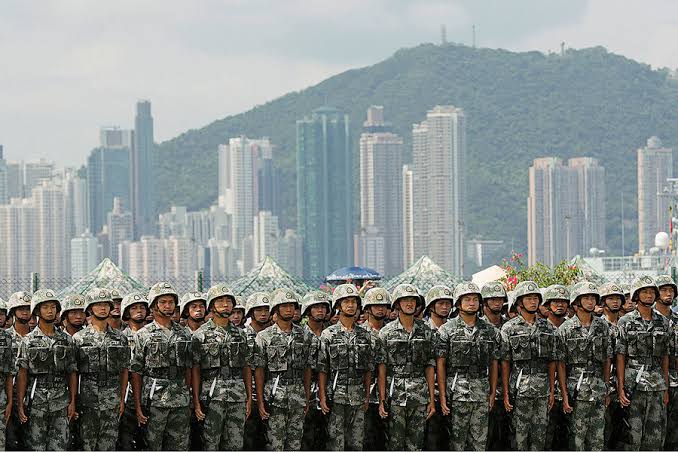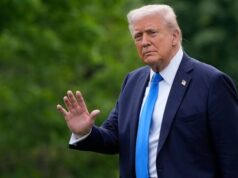The Chinese military garrison in Hong Kong and The Ongoing Protests

Chinese troops have been garrisoned in Hong Kong for 22 years.
As more than three months of protests in Hong Kong have continued unabated, speculation has grown that Beijing could send military forces to quash unrest.
While most experts say it is still unlikely China would mobilise its People’s Liberation Army (PLA) for Hong Kong, a build-up of vehicles and personnel in neighbouring Shenzhen has fuelled discussion about the possibility of an impending Tiananmen Square-like violent crackdown.
China’s state news agency Xinhua reported that the PLA had undertaken a “normal routine annual rotation”, sending new troops to Hong Kong to maintain “prosperity and stability” in the city.
State media also broadcast a slick PR video of armoured vehicles and trucks driving across the Hong Kong border.
Despite claims the rotation was “routine”, the timing has amplified fears Beijing could be preparing to intervene directly in Hong Kong with the PLA.
But what’s in the garrison? What are the rules around an intervention? What might be the consequences? The PLA’s headquarters are built on prime Hong Kong real estate in the financial hub of Admiralty, just a stone’s throw from Hong Kong’s Legislative Council building — the city’s parliament.
Built in 1979, the 28-storey tower was originally the British Army’s head office in Hong Kong. It was once named the Prince of Wales building.
This was until mid-1997, when Hong Kong changed hands from London to Beijing under “one country, two systems”, and the PLA moved in.
The garrison’s function has recently shifted, even before the start of 2019’s pro-democracy protests.
In mid-2017, China’s top military brass signalled the PLA’s presence in Hong Kong was no longer merely symbolic.
It now hosts a combat-ready force.
“The PLA’s garrison in Hong Kong is not only a military garrison; more importantly, it is a political garrison,” wrote several senior PLA officials, as quoted by the South China Morning Post.
“[The garrison] has changed from being a symbolic presence to a show of force, from image building to combat capability development,” they added.
It is now estimated to house between 5,000 and 10,000 troops between Shenzhen and a network of more than a dozen old British barracks in Hong Kong, equipped with the kinds of armoured vehicles shown crossing the border this week.
“It looks like they might’ve boosted their numbers a bit, but there are no new facilities that we know of. So it’s not a major expansion,” said Dr Graeme Smith, a researcher from the Australian National University.”
The presence of the PLA is rather intended for “if it is deemed there is a separatist element that needs suppressing,” he said.
When rotating troops and equipment through the former British barracks in Hong Kong last year, the Chinese Government said that its supplies and personnel numbers were “maintained with no change”.
This caveat was missing from Thursday’s announcement.
In a statement on Thursday, China’s Ministry of National Defence said troops moving into Hong Kong “are determined, confident and capable of fulfilling the duties and missions entrusted by the Garrison Law to safeguard Hong Kong’s long-term prosperity, stability and long-term stability”.
“The fresh [troops] have been trained and carried out studies to master military skills and knowledge about the general situation in Hong Kong and relevant laws,” Xinhua wrote.
Hong Kong’s Garrison Law, effective from day one of Chinese rule, declares that the garrison “shall not interfere in the local affairs of the Hong Kong Special Administrative Region”.
Nevertheless, the law allows that the Hong Kong Government “may, when necessary, ask” Beijing to provide assistance “in the maintenance of public order” or for disaster relief.
Many observers say that the hand of Hong Kong’s Government and its beleaguered leader, Carrie Lam, would be forced by Beijing if push came to shove.
An adviser to Ms Lam told the ABC earlier this month that if the protests “endangered” Hong Kong, she would be likely to call upon the PLA to “quell” unrest.
“If Beijing wants to deploy its troops in Hong Kong, Beijing will simply ring her up and say ‘hey, you better request our assistance’,” Martin Lee of the United Democrats of Hong Kong recently told NPR.
“And of course, we are sure that she would not dare to say no.”
Military intervention against pro-democracy rallies, especially if they are violent, therefore, is a real possibility.
Mobilising PLA troops against Hong Kong civilian protesters would effectively mean the death of “one country, two systems”, which is supposed to last until 2047.
This would have major political implications domestically and for China’s international standing.
According to Dr Smith, China sending in the PLA would “really be shooting themselves in the foot, because what makes Hong Kong special — it’s passively understood — is that this does not happen”.
The paramilitary People’s Armed Police, who have been shown doing riot training in neighbouring Shenzhen and who have been used to suppress separatist movements in Xinjiang and Tibet, are more likely to be used against Hong Kong civilians, he said.
Nevertheless, statements from officials and state media denouncing the protesters as “criminals”, crossing “red lines” through “intolerable violence” add to the perception Beijing wants to convey — that armoured police or troops on the streets can’t be ruled out.
A national defence white paper issued by Beijing in July declared the PLA vowed to take all necessary military measures to defeat separatists.
Some argue that Hong Kong’s reduced economic importance for the mainland means Beijing would be more likely to take this gamble.
While Hong Kong’s economy was equivalent to almost a third of China’s entire economy in 1993, it is now worth less than 3 per cent. Neighbouring Shenzhen’s economy overtook Hong Kong’s last year.
But the Special Administrative Region does maintain its status as an important global financial capital and the gateway for foreign businesses to invest in mainland China.
Whether Beijing mobilises PLA boots on the ground in Hong Kong would thus be a drastic, but not impossible, decision.




